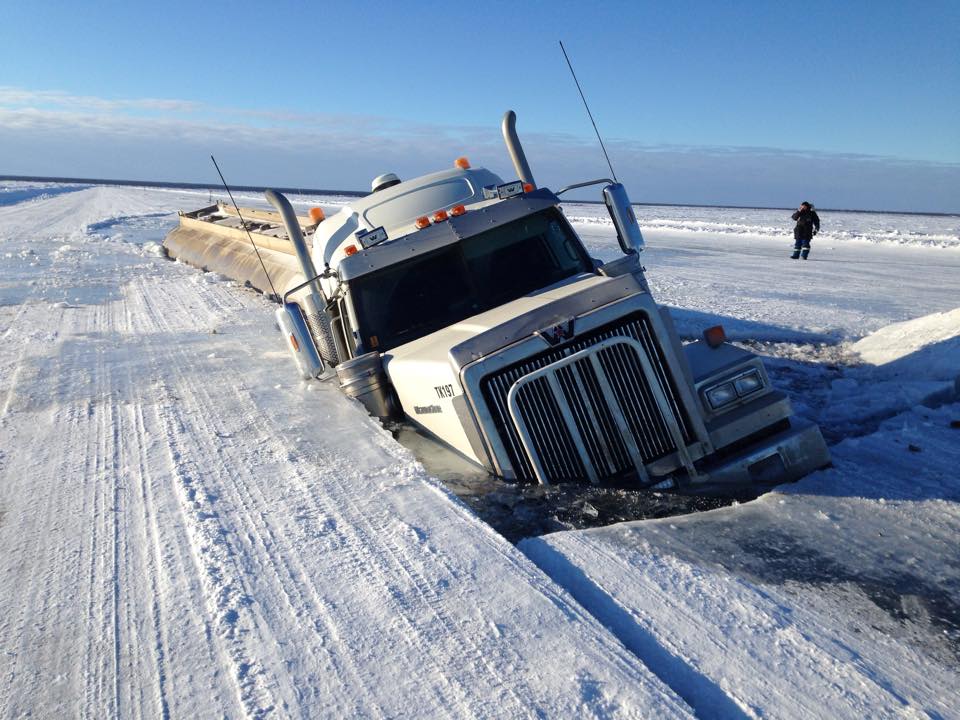If NASA’s latest “shocker” of a global heat record doesn’t scream “climate emergency” quite loud enough for you, this heavily symbolic image out of Canada might do the trick.

The photo – yes that’s a fuel tanker that’s about to sink through melting ice on Canada’s Great Bear Lake (the driver reportedly escaped unharmed) – was snapped by the Government of the Northwest Territories, just days after it raised the weight limit on the Arctic Circle ice road crossing from 10 metric tons to 40 metric tons.
As Climate Progress’ Joe Romm points out, opting to quadruple the allowable weight limit on an ice crossing after the hottest February on record — which followed the hottest January on record – seems a little counter-intuitive.
After all, it’s been so warm up north that the last two months both set records for low sea ice in the Arctic. Indeed, the Arctic was so warm in January that National Snow and Ice Data Center chief Mark Serreze said it was “absurdly warm across the entire Arctic Ocean.” And in February, parts of the Arctic were 18°F warmer than normal — and central northern Canada was as much as 10°F warmer than normal.
But at least the Canadian PM is onto it. Justin Trudeau recently got global attention for signing a pact with the US to work together and with other countries to combat climate change and anchor economic growth in clean development.
As we reported here, the bilateral agreement targets various climate measures, including environmental protections in the Arctic, where melting ice is creating new opportunities for shipping and oil drilling – but not for trucking, apparently. Trucks do get a mention, however, with a separate pledge to “encourage robust leader-level” commitments to improve the environmental performance of heavy-duty vehicles through the G-20.










